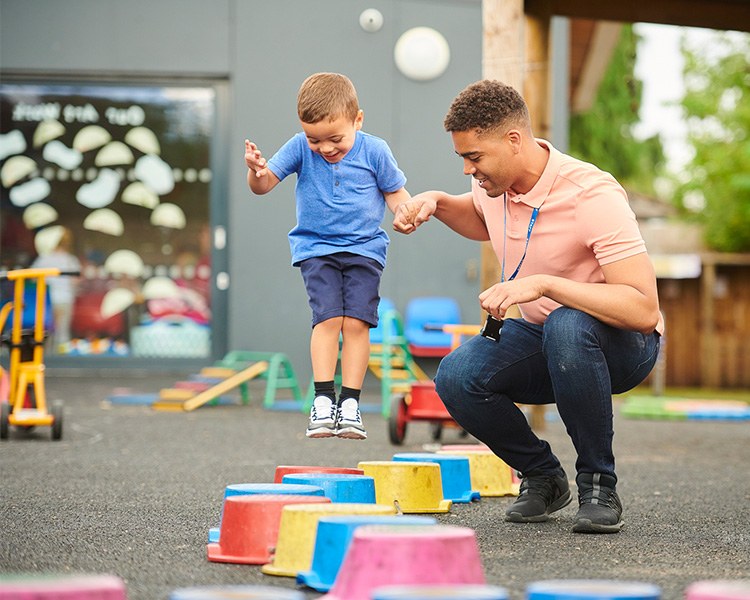Children experience their worlds physically through senses and movement. Understanding motor development and sensory integration allows one to reframe challenging behaviors such as running, jumping, and climbing for what they are—natural movement urges that children experience as a normal part of their development. This course explores structured activities and curated environments for unstructured physical activity, including risky play, as a strategy for positive behavior support in the classroom. (2 hours)

A teacher helping a child jump through a colorful stepping stones course on an outdoor playground.
View the course for free in On Demand.
Course Objectives
- Identify the four phases of motor development and the movement skills that children develop in each phase
- List structured physical activities to meet children’s different movement needs, recognizing the elements of risky play and rough-and-tumble play in children’s movements
- Describe environments that support unstructured physical activity and positive behavior support strategies for children engaged in physical activity

